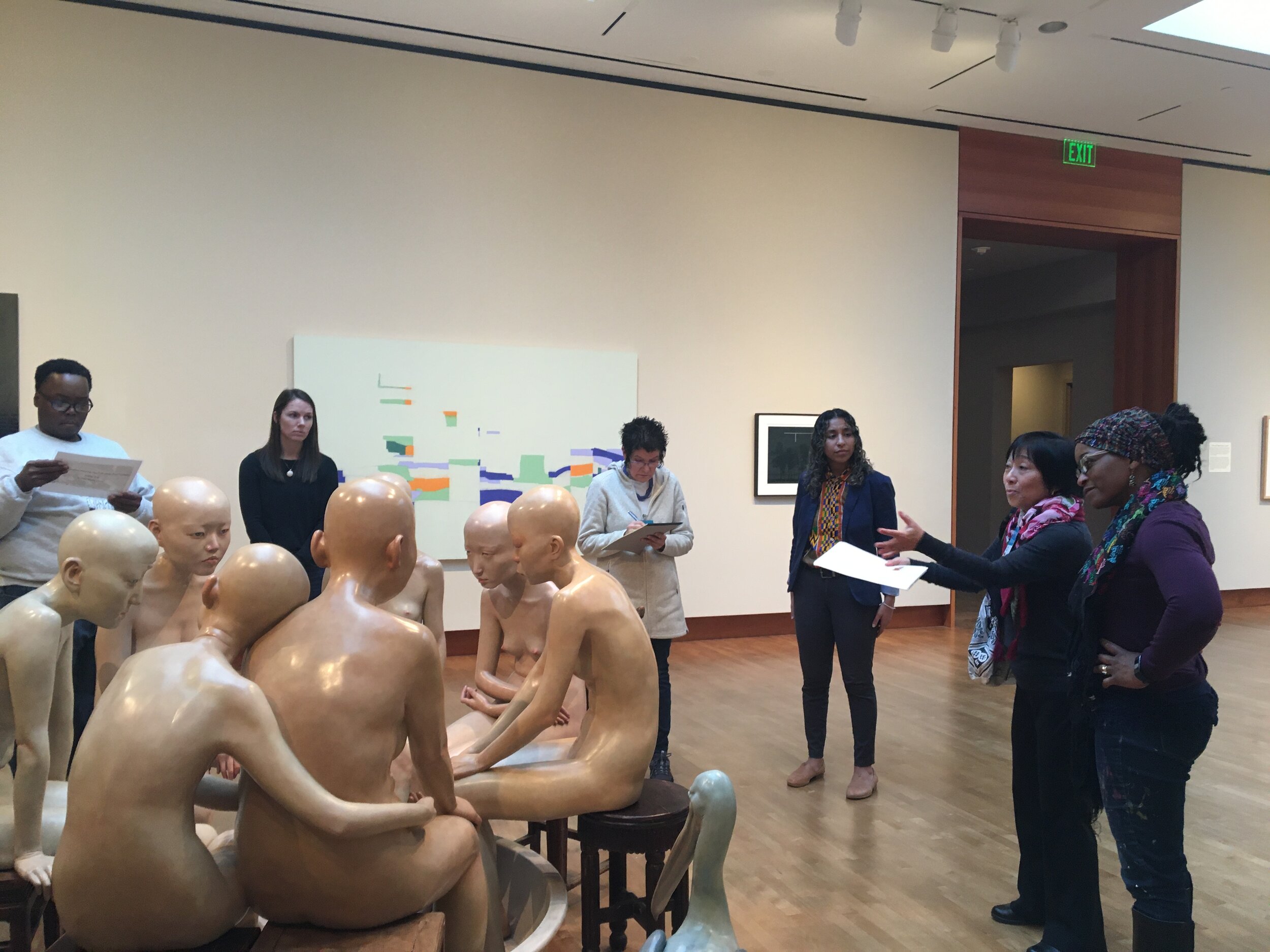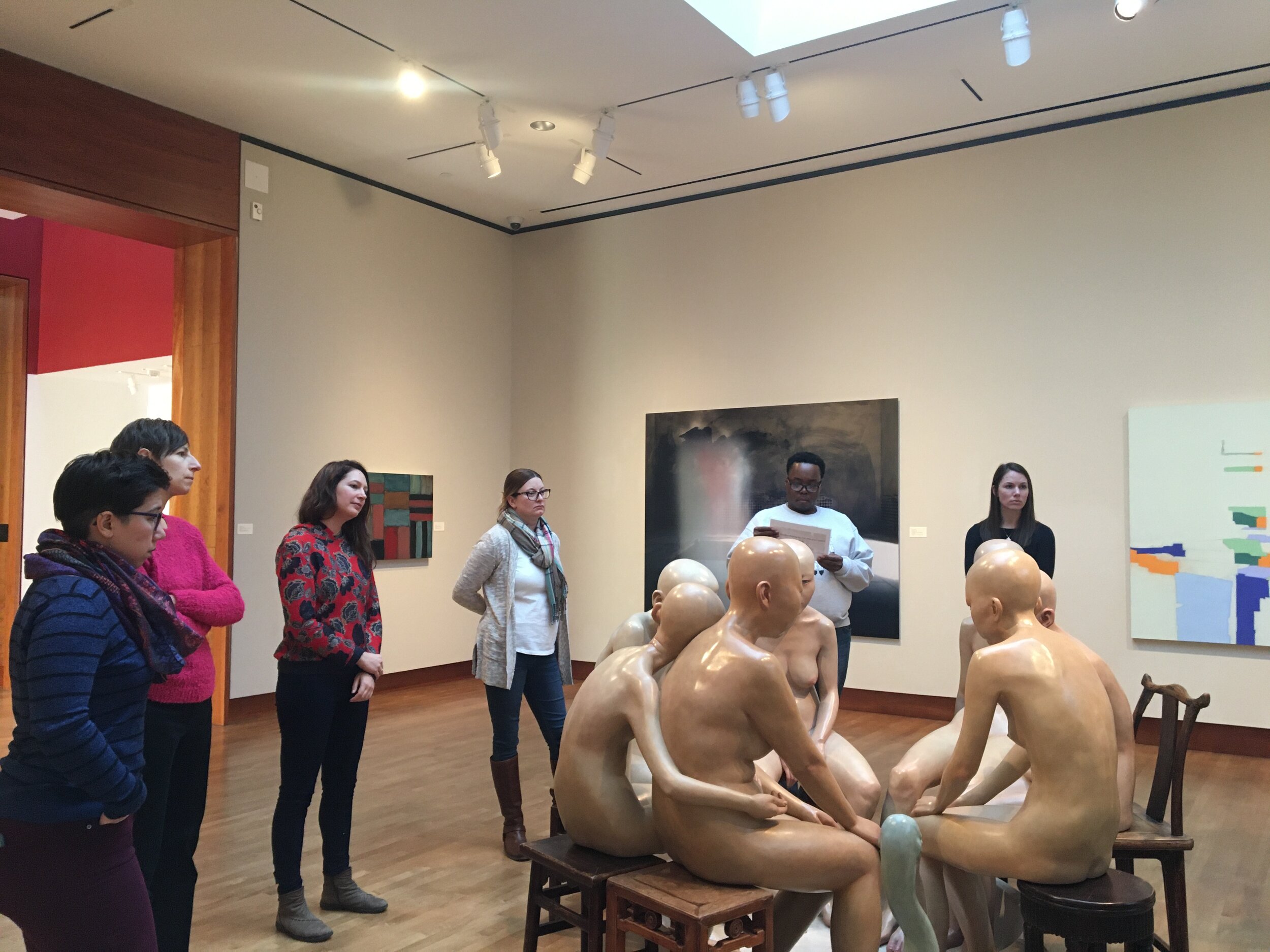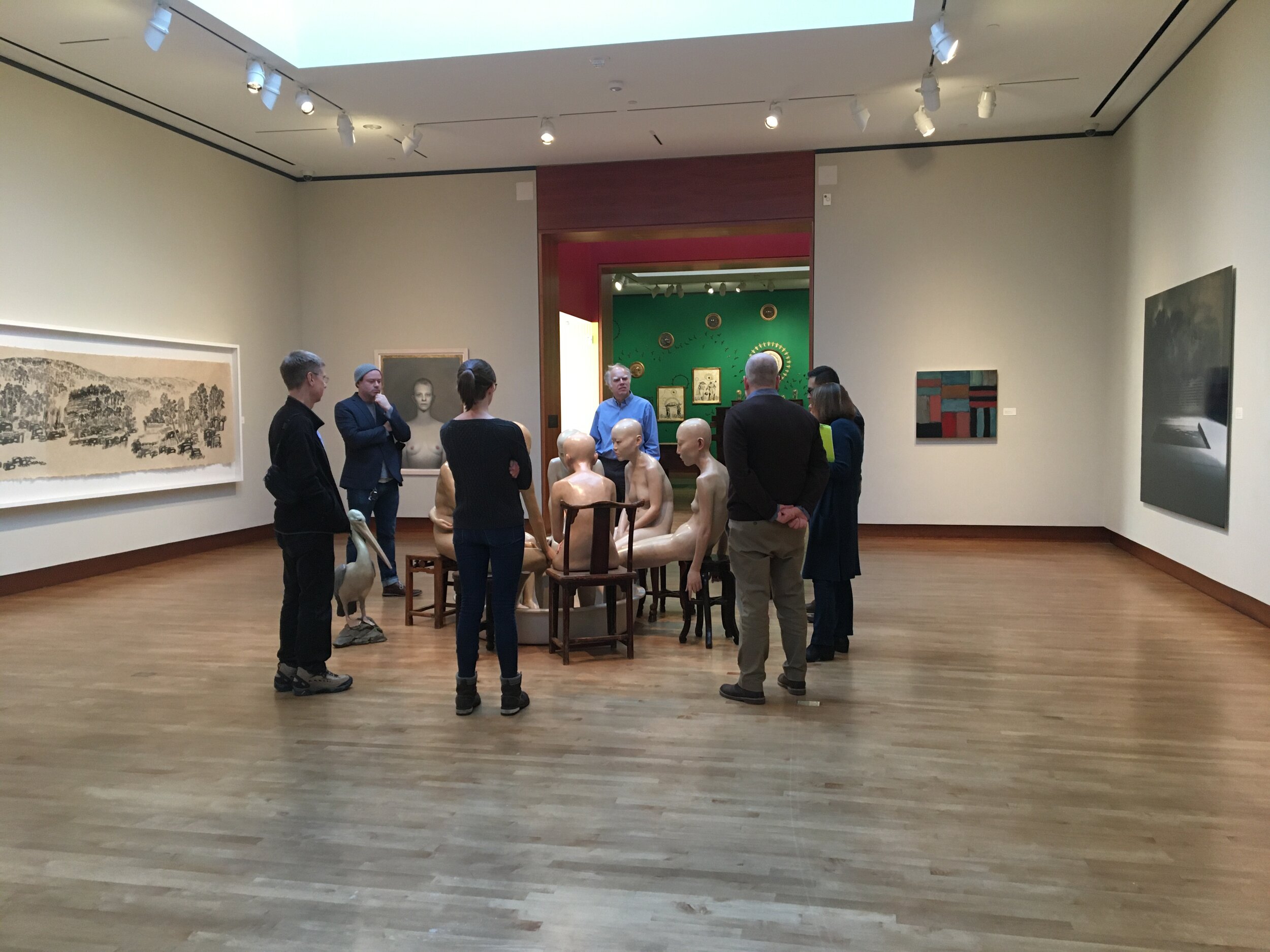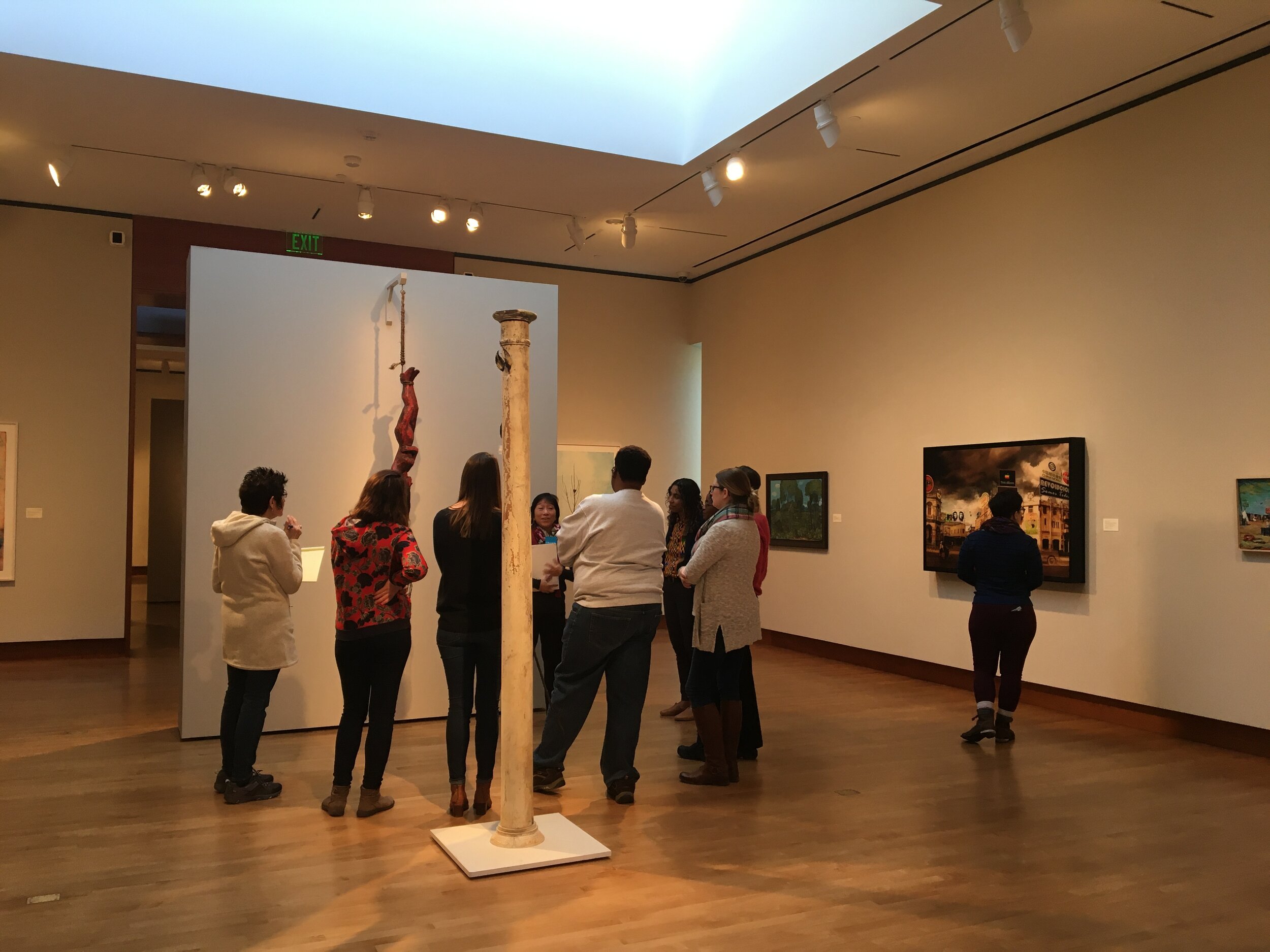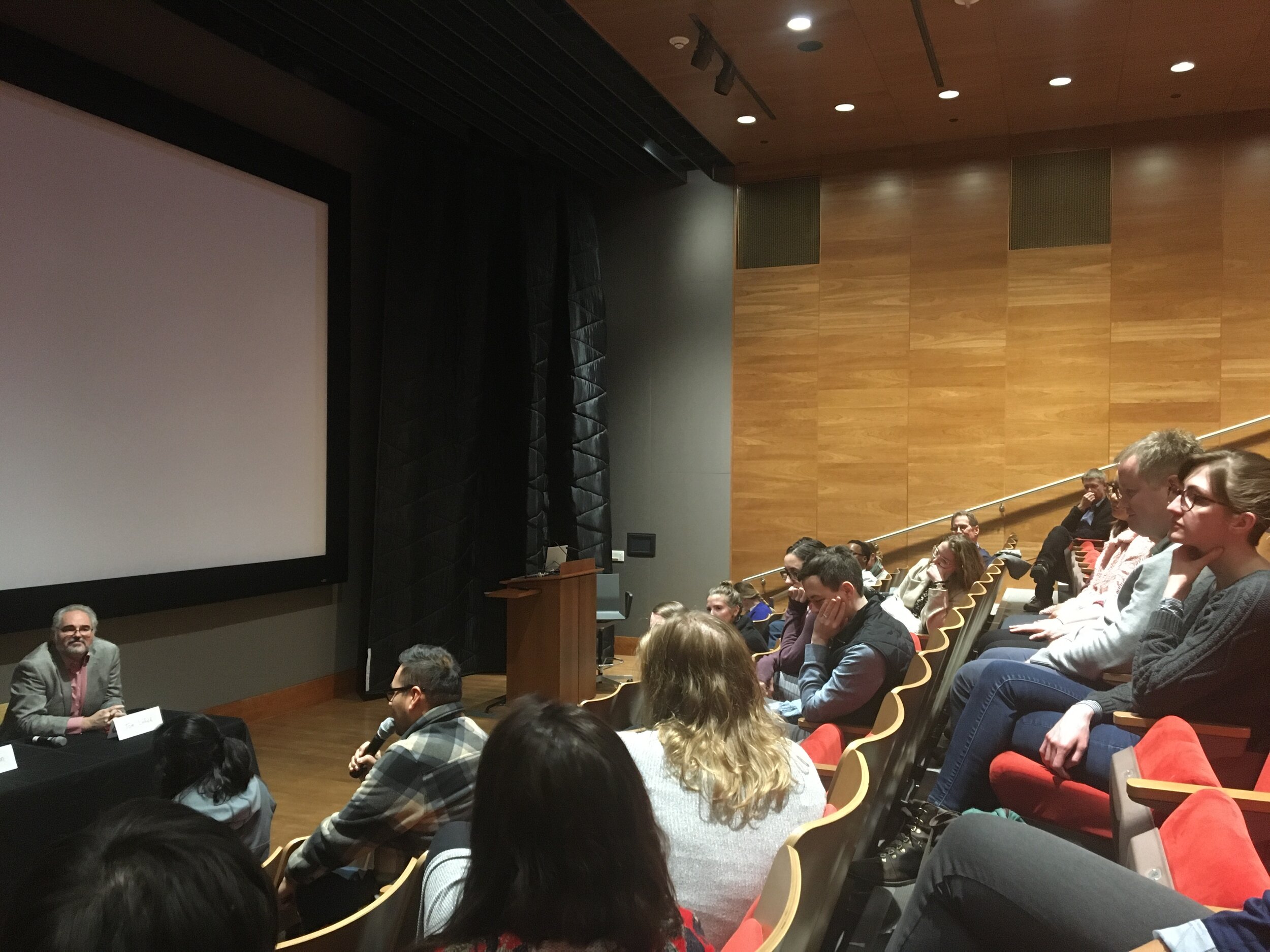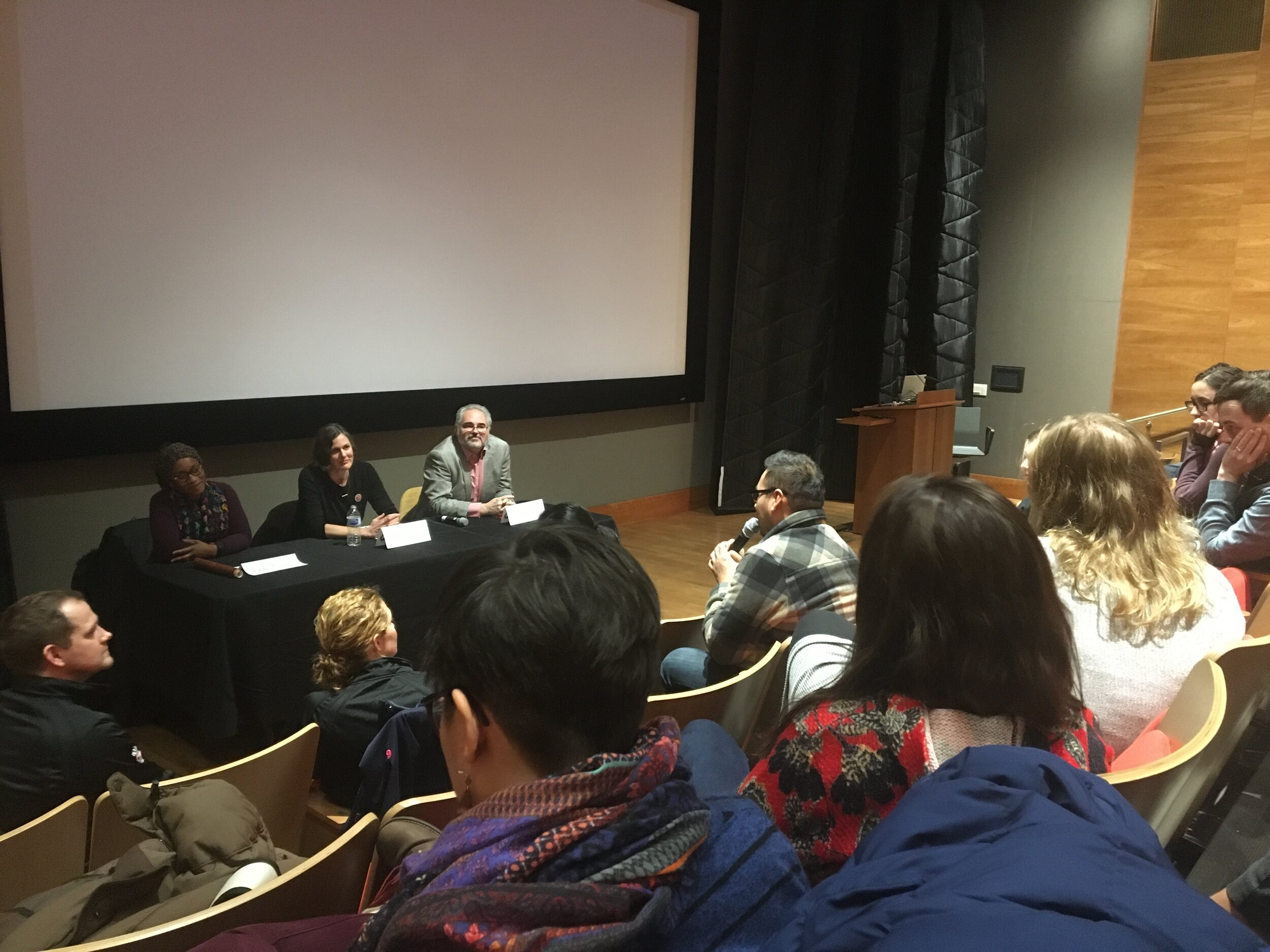A blog post written by Maddie Johnson, 2018-2020 Fellow
One of my favorite parts of the fellowship program is the learning community meetings. As fellows, preventative medicine residents, preceptors, and faculty, we have the opportunity to convene once a month and learn about a different public health topic. Each year of the two year fellowship, a fellow is assigned to plan one of the learning community meetings. Last year, I organized a meeting called Housing Poverty, and the Law. This year, the focus of my planned learning community meeting was Arts, Social Justice, and Public Health.
Planning a learning community takes commitment, persistence, and organization. Facilitators have to find an affordable venue as well as engaging presenters. Plus, it is important to plan a day that is a mix of lecture, discussion, reflection and activity in order to keep the audience interested. Additionally, there are numerous administrative logistics to cover including RSVPs, catering, and post-meeting evaluation.
Arts, Social Justice, and Public Health took place on February 14th, 2020 in the Chazen Museum of Art auditorium, which is the University of Wisconsin-Madison campus art museum. I chose this location with my other meeting planners because it is fairly accessible for those living in Madison as it is on campus and a bus line. However, I had some concerns about not basing our meeting in a community setting. When planning a learning community meeting, it is important to consider all perspectives, which means engaging community groups. I think the University environment can potentially be less welcoming for community groups, so I did advocate for us to consider holding the meeting in another community setting. However, given that our meeting focused on art, being in an art museum made sense for learning purposes and we ultimately decided to have the meeting in the museum.
There are other barriers to engaging community groups when planning learning community meetings. In November, we had a learning community meeting on youth engagement. Given that the meetings occur during the work day this can be challenging for certain groups like youth to attend. Additionally, as a fellowship community, we are asking folks to present on a limited budget. Generally, we ask presenters to share with minimal compensation. There are some administrative barriers that prevent compensation. We consider local presenters whenever possible as monetary compensation for travel and mileage can be challenging.
The learning objectives of the February learning community meeting focused on exploring art through different mediums such as visual arts, music and theater. We also discussed how art can shape the perceptions of certain communities and how art can help communities heal from trauma. As one of the facilitators and organizers of the day, it was a whirlwind. I constantly was thinking one step ahead as the speakers presented to ensure the day flowed smoothly and that all details were accounted for (Is the speaker using the microphone? Is the speaker’s PowerPoint up and running? Do we have time for one more question or do we need to move on to the next presenter?).
Because of my role as the meeting organizer, I felt like I had less time to sit back and digest the information from the day. Since as fellows and residents we switch each month who plans the day, other months I get to sit back, relax, and reflect. It has now been about two weeks since the February learning community meeting and I have had some time to think. My main takeaway is a question: what does true community engagement look like in public health work?
I have wrestled with this question since the beginning of my public health career and found that the February learning community provided examples of true community engagement, yet none of the presenters likely identify as public health practitioners. However, the presenters are addressing public health issues (such as housing, built environment, and youth engagement). They also recognize that the process of engaging a community is sometimes more important than the outcome of the project.
One of the presenters, Emida Roller, the executive director of Dane Arts Mural Arts, Inc. (DAMA), discussed how DAMA incorporates community engagement into their work. DAMA works alongside communities to beautify neighborhoods through mural paintings. Community members are engaged in every step of the mural production from identifying the location to the mural images as well as the actual painting and creation of the mural. One example she mentioned was near Hawthorne Elementary School in Madison. The mural was painted inside the walls of a tunnel under East Washington Avenue. Previously, the tunnel was not used by the students because they thought it was dirty. Alternatively, students crossed a busy intersection at east Washington Avenue to get to school. By beautifying the tunnel, the hope is that the tunnel will be the students’ new pathway to school.
This example of community engagement reminded me of another learning community in October 2018. Lead by Human Impact Partners, a non-profit and advocacy organization, we learned about racism. I specifically remembered an exercise where we considered how much we incorporate community engagement in our work. Known as the Spectrum of Community Participation, I see DAMA’s work on the co-power level, but I think public health work especially when guided by health departments tends to be at the consult level.
Image Source: Health Impact Partners Spectrum of Community Participation, October 2018 PowerPoint
As I reach the final months of my fellowship, I am considering more deeply how my future career can involve community engagement. I think each level of government from the local to the federal level should ultimately support the voices of communities. Regardless of my next position after the fellowship, I want to strive toward the collaborate and co-power levels in my public health work where the community has decision-making authority. Community members are the experts in their own stories.
____________________________________________________________________
Below are some additional images from the Learning Community meeting!


